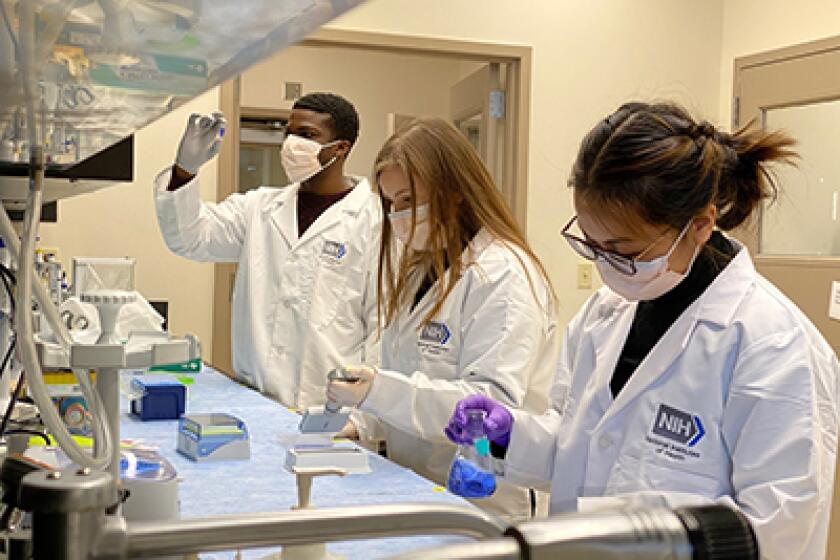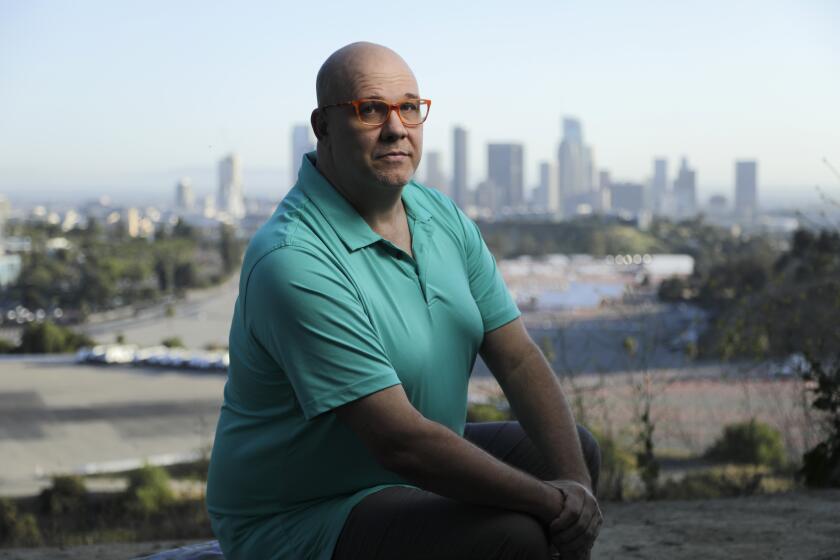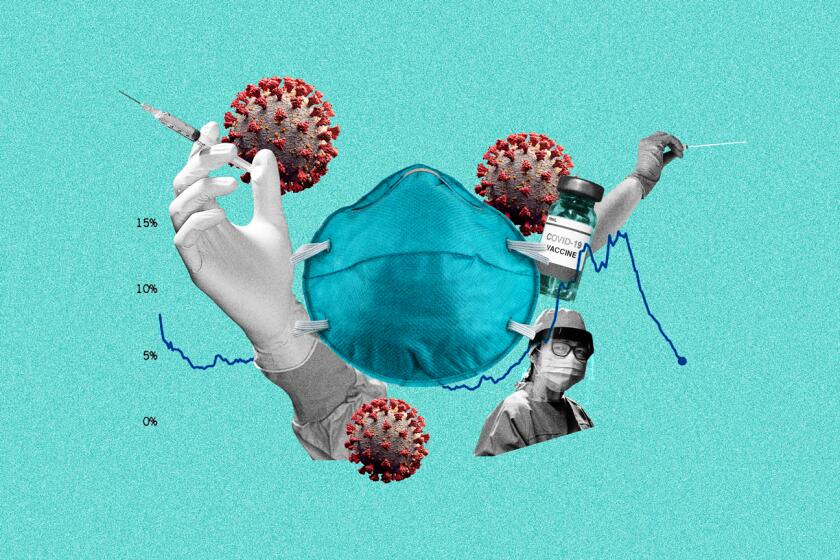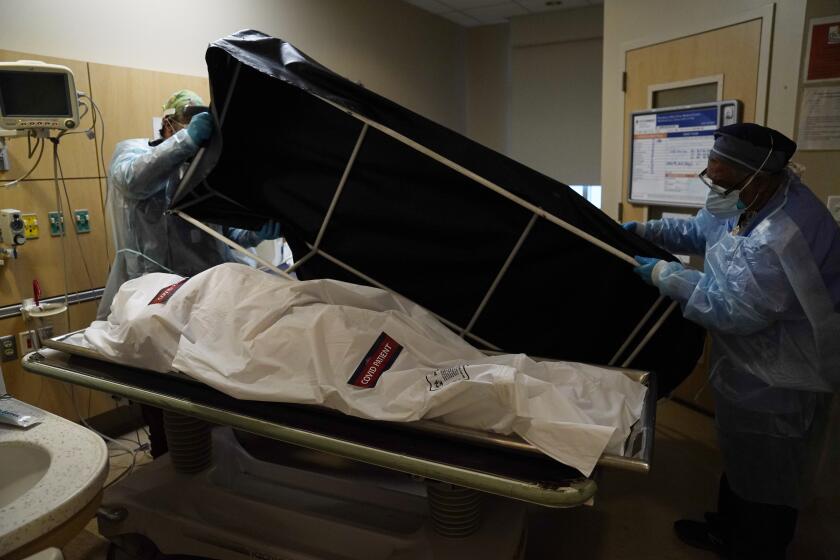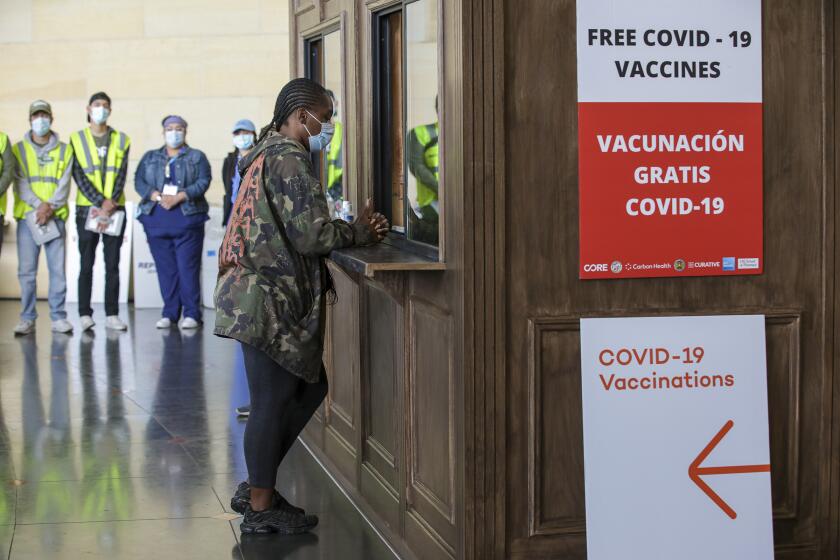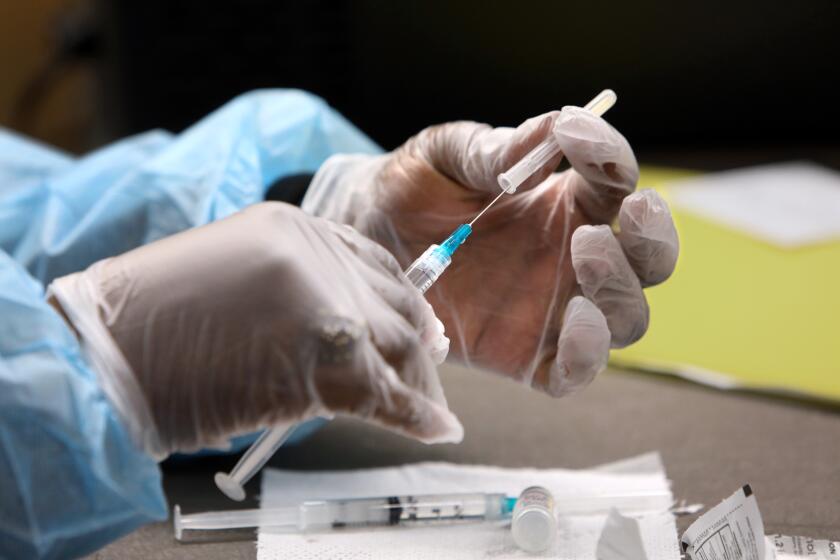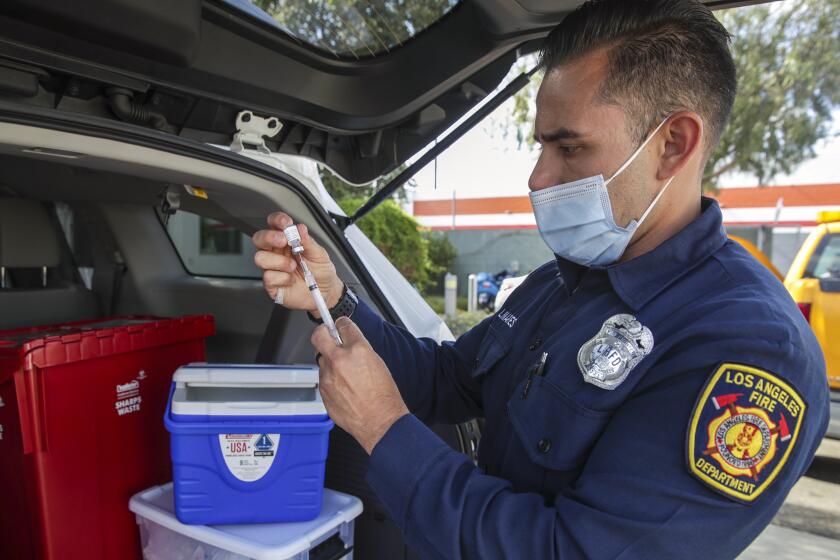âLong COVIDâ is a risk for the unvaccinated. What you need to know
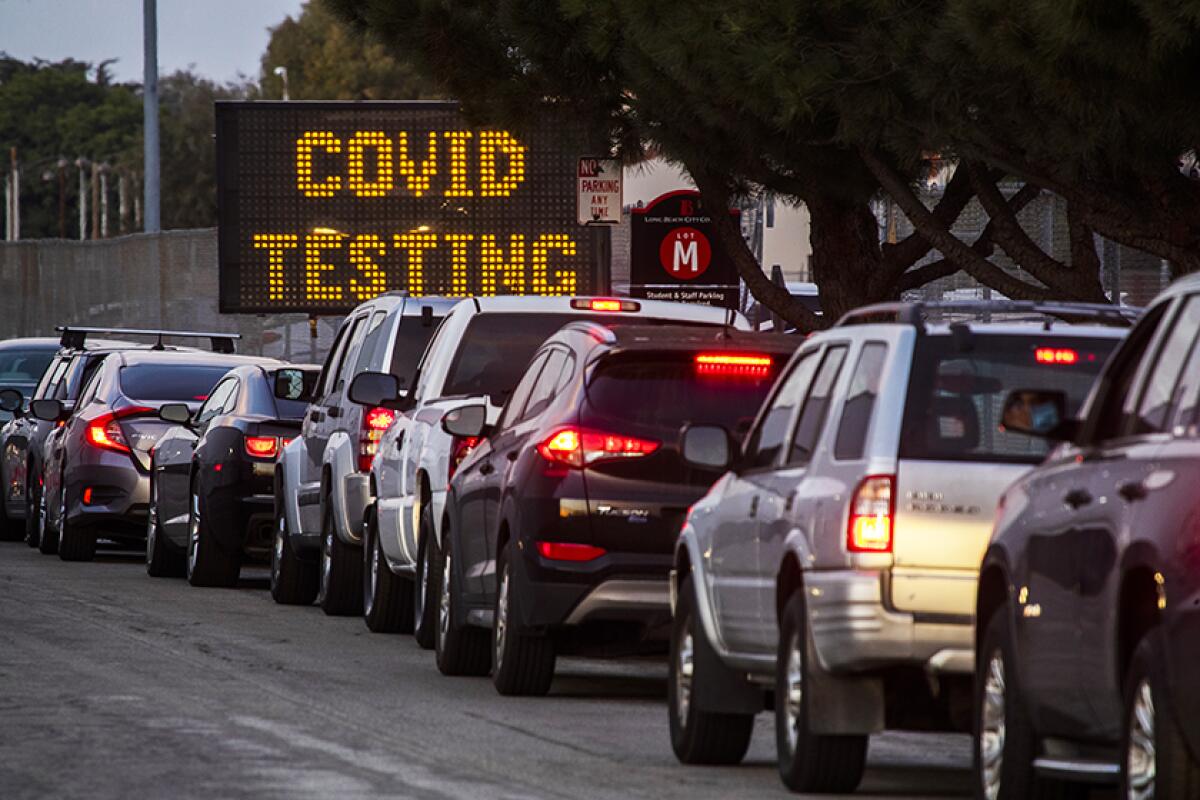
For untold numbers of people around the world, a bout with COVID-19 is just the beginning.
Those in this unlucky group may have thought theyâd recovered from the disease. But weeks or months later, they find themselves contending with a baffling array of symptoms that donât quite add up to COVID-19 and just wonât go away.
Itâs a condition that has come to be known as âlong COVID,â also known as post-acute sequelae of COVID, or PASC.
However, it remains steeped in mystery. Scientists canât say for certain how many people ultimately suffer from the lingering symptoms, why exactly they occur or whether any particular population is more at risk.
But given that more than 33.4 million people nationwide â including almost 3.8 million Californians â have tested positive for the coronavirus at some point during the pandemic, and the true infection count is likely even higher, officials say itâs important for people to be aware of the possibility, as well as the warning signs.
For every confirmed coronavirus infection in the U.S. during the spring and summer of 2020, 4.8 other cases went undetected, a new study finds.
One study in Italy found that more than half of COVID-19 patients ages 6 to 16 had at least one symptom of long COVID for more than four months, with many experiencing symptoms severe enough to impair their daily activities, said Dr. Christina Ghaly, the Los Angeles County health services director.
A study from the United Kingdom found that of teenagers infected with the coronavirus, 15% suffered from long COVID symptoms that interfered with their daily lives.
Dr. Rochelle Walensky, director of the U.S. Centers for Disease Control and Prevention, said last week that the agency âis continuing to work to identify how common these longer-term effects are, who is the most likely to get them and whether symptoms eventually resolve.â
Hereâs a closer look at a condition that threatens to outlast the pandemic:
Dozens of grass-roots organizations have formed to make sure that COVID-19 and its lingering symptoms remain in the public eye.
What is long COVID?
Long COVID is one name for a puzzling syndrome that can afflict people who are infected with the coronavirus.
The condition can last for weeks or months, and perhaps longer.
What are the symptoms?
Some symptoms are the same as regular COVID-19: fever, fatigue, headaches, coughs, difficulty breathing or shortness of breath, and loss of smell or taste.
Others are seemingly unique to long COVID, such as heart palpitations, depression, dizziness upon standing, joint or muscle pain, depression or anxiety, and difficulty concentrating or focusing, a condition sometimes called âbrain fog.â
Patients suffering from long COVID say the symptoms can come and go without warning.
âFor some people, they can be severely debilitating,â Walensky said during a briefing on Tuesday.
Are vaccines safe? When can I get a booster dose? Do I have to wear a mask? Weâve answered hundreds of newsletter readersâ questions. Hereâs an archive.
Who is most at risk of getting long COVID?
The CDC says long COVID can affect people who had only mild cases of COVID-19 and even those who were asymptomatic.
However, some experts think there is more convincing evidence that long COVID tends to occur after severe COVID-19 or symptomatic illness.
Well-done studies compare people â over the same period â with coronavirus infections with those who did not have infections. Those studies suggest âtrue long COVID symptoms are more common after symptomatic or severe disease,â said Dr. Monica Gandhi, a UC San Francisco infectious disease expert.
Two decades of progress in closing a yawning gap between the life expectancy of Black and white Americans has been erased by COVID-19.
What causes long COVID?
One plausible explanation is that the bodyâs immune response to coronavirus infection generates âa massive inflammatory reaction you get to try to fight the virus,â Gandhi said.
Symptomatic or severe illness can produce the kind of âdisorganized, innate, inflammatory responseâ that can lead to long COVID, Gandhi said.
Can vaccines prevent long COVID?
Long COVID is extremely unlikely to occur in someone who is fully vaccinated, Gandhi said.
If the body is exposed to the coronavirus after vaccination, the immune system â instead of producing a disorganized, inflammatory response â is primed to generate âa very organized response to the virus,â making long COVID unlikely, Gandhi said.
Post-vaccination, the immune system basically says, ââOK, Iâm going to adapt to fight this particular virus,â comes in and saves the day,â Gandhi said. Such an organized response resolves symptoms quickly.
Ghaly agreed, saying, âIf the virus canât take hold in your body â if it canât get into your system and if it canât start replicating â then it doesnât have a chance to get to the point where you might translate into having long-haul symptoms.â
âWhether your concern is serious illness or death from COVID, or your concern is long-haul symptoms from COVID, either way, the vaccine is the best way to protect yourself against either,â she said.
To date, more than 60% of Californians have received at least one vaccine dose, and 49% are considered fully vaccinated, according to the CDC.
More than 60% of Californians have now received at least one dose of COVID-19 vaccine, federal figures show â the latest milestone in the stateâs vaccine rollout.
Are there any risk factors for getting long COVID?
Women are more likely to contract long COVID than men, Gandhi said, although itâs unclear why.
And people who have preexisting conditions that make them more likely to suffer from severe COVID-19 â such as heart disease or lung disease â are more likely to get long COVID, Gandhi added.
Are vaccines a treatment for long COVID?
Not officially, but about one-third of those with long COVID have reported that their symptoms improved after receiving a dose of COVID-19 vaccine.
Akiko Iwasaki, an immunobiologist at Yale, is one of the principal investigators of the Yale COVID Recovery Study, which seeks to understand whether the vaccines are responsible for this improvement and, if so, why.
She has theorized that COVID-19 survivors still have coronavirus proteins and fragments of viral RNA lingering in their systems, causing an array of problems. If so, a dose of COVID-19 vaccine could be prompting the immune system to clear out the stragglers.
If scientists discover that immunity to the coronavirus starts to wane months or years after vaccination, a booster shot could be deployed.
Can long COVID affect people who were in good health before they got COVID-19?
Yes.
Andy Slavitt, who served as a senior advisor to President Bidenâs COVID-19 response team, said in May that one of his sons was still suffering from long-term problems half a year after he was infected with the coronavirus.
âHeâs young and fit and in the prime of his life,â Slavitt said. âBut six months later, he still suffers from tachycardia, shortness of breath and ongoing and frequent flu-like symptoms. His hands are cold to the touch. Neither he nor his parents â my wife and I â are sure how long this will last.
âMany young people are in this situation, and many, many have it worse,â Slavitt added.
Should doctors be on the lookout for post-COVID-19 symptoms in survivors?
Yes. Healthcare providers should be aware of the potential for post-COVID-19 illness, according to recent research published in the CDCâs Morbidity and Mortality Weekly Report.
The report said that among more than 3,000 adult patients who did not need to be hospitalized for their COVID-19 illness, almost 70% had to visit an outpatient facility one to six months after being diagnosed with a coronavirus infection.
In L.A. County, vaccination rates are lower among Black and Latino residents. Health officials fear a disproportionate rise in COVID transmission.
Two out of 3 of them were diagnosed with something new, and âsymptoms potentially related to COVID-19 were common new visit diagnoses,â the report said.
Generally, visits for these symptoms decreased after two months, the report said, but for some patients, they persisted for as long as six months.
âIn other words, even patients who were not hospitalized for COVID-19 infection were commonly referred for additional evaluation for COVID-19-related symptoms and conditions after their initial illness,â Walensky said. âWe have seen post-COVID conditions in people of all ages, and this makes it even more important, for anyone who is eligible, to get vaccinated.â
More to Read
Sign up for Essential California
The most important California stories and recommendations in your inbox every morning.
You may occasionally receive promotional content from the Los Angeles Times.
